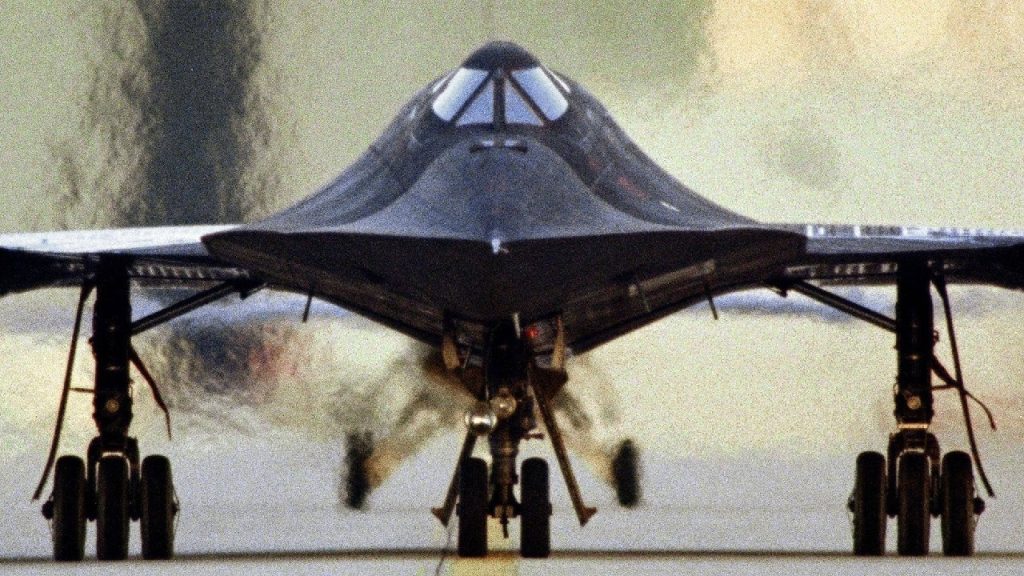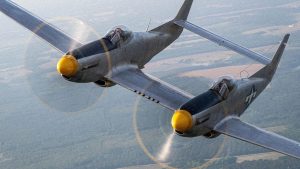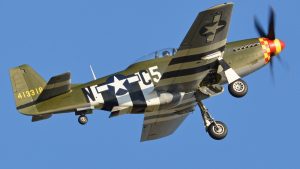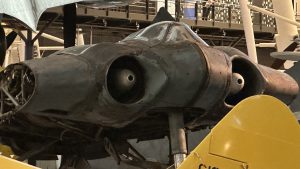The SR-71’s top speed was limited to Mach 3.2 but could have much greater speeds. Its predecessor, the A-12 “Cygnus,” could have speeds exceeding Mach 3.56.

SR-71 Blackbird Spy Plane. Image Credit: Creative Commons.
Movies like Transformers: Revenge of the Fallen and I Am Legend helped make the Lockheed SR-71 “Blackbird” a cultural symbol; the X-Men also frequently uses a fictionalized version of the plane, which they call the X-Jet but commonly refer to as the Blackbird.
The A-12 series, from which the SR-71 descended, was planned, built, tested, flown, and put into service with surprisingly little fanfare or notice, which is particularly remarkable given the aircraft’s massive size and the powerful noise produced.
In truth, people learned about the high-tech planes when President Lyndon B. Johnson announced their existence in February 1964.
Below mentioned are some interesting facts about the Lockheed SR-71 Blackbird:
Lockheed’s A-12 “Oxcart,” the forerunner to the Blackbird, was developed as a successor to the infamous U-2 spy plane. It was improved to reach higher altitudes and travel at greater speeds, allowing it to sneak across enemy airspace on covert missions. Because of how far ahead of its time the Oxcart project was, many new technologies had to be devised for it, and titanium work was one of them.
In production from 1962 to 1964, the A-12 was in service from 1963 to 1968. The YF-12 prototype interceptor, the M-21 launcher for the D-21 drone, and the SR-71 Blackbird all descended from it.
The YF-12A was developed as part of the Improved Manned Interceptor Programme to carry the Hughes ASG-18 pulse-doppler radar, infrared sensors, and eight Hughes AIM-47A massive long-range air-to-air missiles. The YF-12A was the only aircraft of its time capable of maintaining Mach 3, and it was widely considered to be the most sophisticated aircraft in the world. NASA employed two of them to study the effects of high-speed travel without weapons. One of the three YF-12s built was destroyed in a crash near Edwards Air Force Base (AFB) in California on July 24, 1971; the other two are on display at Wright-Patterson AF Base (AFB), the National Museum of the United States Air Force in Dayton, Ohio, and the Hill Aerospace Museum at Hill AF Base (AFB) in Hill, Utah, respectively.
The SR-71 carried the idea differently with its strategic reconnaissance plane. It was more than 80,000 pounds heavier and far longer than its predecessor. A total of 32 Blackbirds were built, and not a single SR-71 was ever lost to enemy fire due to its exceptional speed and other characteristics. Tragically, twelve SR-71s were destroyed in accidents during their service life, and one pilot was killed. The preserved planes are currently on display at museums all around the USA.
The SR-71 was designed with a low radar cross-section, with massive wedges of radar-absorbing material built into the structure. The planes are officially indigo blue, despite being called “Blackbirds.”
The two massive, movable inlet spikes housed Pratt & Whitney J58 bleed-bypass turbojets that propelled the high-velocity aircraft.
The SR-71 could only reach Mach 3.2 during test flights, despite being capable of much greater speeds. Its predecessor, the A-12 “Cygnus,” could have speeds exceeding Mach 3.56.
The SR-71, which had three bases worldwide, could travel to any part of the world with enough advance notice during the Cold War. On March 21, 1968, the SR-71 flew its first combat mission over Vietnam. During its service, the SR-71 gathered data on several major conflicts, including the Yom Kippur War in 1973, the Israeli invasion of Lebanon in 1982, the US air forces’ strike on Libya in 1986, and the discovery of Iranian Silkworm missile batteries in 1987.
On July 28, 1976, an SR-71 reached a height of 85,060.997 feet and an absolute speed of 2,193.167 miles per hour, both of which were class records.
Compared to conventional warplanes of the day, the SR-71 had to be launched into space like a rocket and required hours of planning and a large crew to launch the Blackbird into the skies safely.
Yet, the preparation was well worth it because an hour in the air allowed the plane to survey 100,000 square miles.





